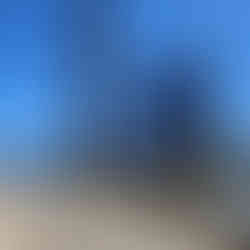Perth - Getting Out to Walk Today!
- Deb
- Oct 20, 2024
- 2 min read
I woke up pretty early today, my first full day in Perth (10-October).
It looked like a beautiful morning, and I had no place in particular to be. I took an Uber to Kings Park Botanic Garden. Back in a garden again! There really isn't anything much I love more than wandering in a place like this (unless I am yearning for isolation, in which case it's walking in the woods with no other people around).
Kings Park is almost 1,000 acres and is up on a hill overlooking what is called 'Perth Water' and the central business district. It comprises grassed parkland, natural bushland on Mount Eliza, and also the botanic gardens. The park was originally opened in August 1895 when it was was called Perth Park. It was renamed in 1901 to King's Park to mark the ascension of King Edward VII (the apostrophe was later dropped).
I was told that it is actually the most popular destination for visitors in Western Australia, with over 5,000,000 visitors each year.
A 44-acre section within the park is the Western Australian Botanic Garden.
Botanic Garden. According to what I read in the information they provided, there are approximately 2000 examples of WA flora on display. In addition, the garden is part of the worldwide network of botanic gardens committed to plant conservation.
There were amazing views of Perth, along with paths through lawns, trees, flowers and places to just sit and enjoy. As I am wont to do in gardens like this, I just wandered (over almost all of the paths I found) for several hours (probably about 3km), and took pictures of the things that really caught my eye.
After my time at Kings Park, I walked down to Elizabeth Quay (about 1.7km), which is centered around an artificial inlet that opens into the Swan River. This area is part of 'Perth Water', which is considered a landmark of Perth, and is on the southern edge of the central business district. It is the site of wharves and a ferry to Fremantle and Rottnest Island, commercial and residential development, restaurants and hotels, and more. I grabbed some lunch and sat outside watching the water for a while. And of course, watching the people - another of my favorite things to do!
Then I walked back to my hotel (about 1.3km), arriving about 3:00pm, just in time to pick up my registration packet for the Mensa International Board of Directors Meeting (IBD). This even moves to different Mensa countries each year. I'm not a delegate, but having been one in the past (and having been involved with Mensa for 40 years now, I know a lot of people. This is an opportunity to hang with folks from the international community - those I know and those I am yet to meet! I'm really looking forward to the next three days.
I probably won't be posting a lot here during the time, although there will be some things to share as I have signed up for a few non-official events.






































Love the Pandanus tectorius which is commonly known as the hala tree. It’s a tropical plant native to coastal regions in the Pacific and Indian Oceans. The hala tree is known for its distinctive, spiky leaves and its ability to thrive in sandy soils. It plays a significant role in local ecosystems and cultures.